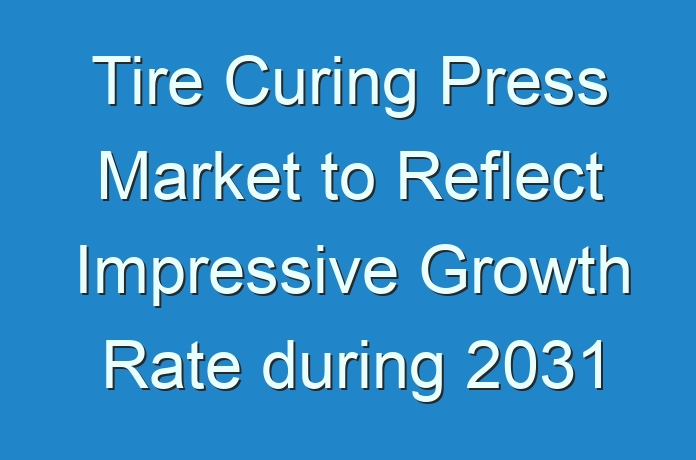
Tire Curing Press Market: Introduction
Curing is a process to give a tire its final shape and tread pattern. The procedure includes applying heat energy to stimulate a chemical reaction between the rubber compounds and other materials. In the past, steam was used to create the heat and pressure required for curing. It can be replaced with nitrogen as the pressure agent to remove the drawback of steam. This flexible and inert gas keeps the system pressure at the desired level. Operators of nitrogen-based tire presses can select the system pressure independent of the curing temperature. The elimination of steam reduces the risk of local overheating, and less steam can condense in subsequent stages of the curing process.
Key Drivers of the Tire Curing Press Market
Rising demand for green tires due to emission control is expected to drive the market to a large extent. Furthermore, the application of green tires in vehicles offers improved fuel efficiency and low rolling resistance which also helps to reduce emission from a vehicle. These factors are projected to positively influence the production of green tires and tire curing press during the forecast period. Additionally, the tire curing press does not require regular maintenance that further helps in reducing overall maintenance and operational cost.
Get Sample Copy:
https://www.transparencymarketresearch.com/sample/sample.php?flag=S&rep_id=57942
Latest technological developments such as cloud model creating opportunities in the tire curing press market
This all-steel hydraulic tire curing press is an important equipment for an overseas customer to develop new tires with special structures. Amid the Covid-19 pandemic, machinery companies were unable to send technicians to overseas plants to conduct on-site installation and commissioning. The cloud model provides online “face-to-face” technical guidance, thus helping the employees to have real time interaction while maintaining social distancing due to the Covid situation. This cloud model technology has created new opportunities for the product in the market.
High cost of manufacturing equipment plants may act as a restraint for the tire curing press market
Increased expense of setting up tire manufacturing equipment plants is foreseen to limit the development of the global tire curing press market in the future. Further, changes in material cost are also likely to hamper the growth of the market. Besides, absence of standards and protocols are inhibiting the market growth.
Request For PreBook Report@:
https://www.transparencymarketresearch.com/checkout.php?rep_id=57942<ype=S
Europe the dominant market
U.K, Germany, and France are the dominant markets for tire curing press. Increasing number of manufacturers of tire curing press and government regulations to reduce greenhouse emission from vehicles are also projected to enhance the production of green tires in these countries. The increased awareness and benefits of tire curing press is creating more demand for the product in the market.
Grab an exclusive PDF Brochure of this report:
Key Players Operating in the Global Market
Companies are working on product innovation and development to increase their customer base. Furthermore, key companies are adopting the merger and acquisition strategy to improve their market revenue at the global level. Some of the major companies identified in the tire curing press market are:
- Larsen & Toubro Limited
- McNeil & NRM, Inc.
- Rogers Industrial Products Inc.
- Greatoo Intelligent
- Guilin Rubber Machinery Co., Ltd.
- Ling Long Tire
Tire Curing Press Market: Research Scope
Tire Curing Press Market, by Type
- Mechanical
- Hydraulic
- Hybrid
Tire Curing Press Market, by Mold
- Two-piece mold
- Segmental mold
Tire Curing Press Market, by Application
- Passenger vehicles
- Commercial vehicles
Tire Curing Press Market, by Region
- North America
- U.S.
- Canada
- Rest of North America
- Europe
- Germany
- France
- U.K.
- Rest of Europe
- Asia Pacific
- China
- Japan
- India
- Rest of Asia Pacific
- Middle East & Africa
- GCC
- South Africa
- Rest of Middle East & Africa
- South America
- Brazil
- Rest of South America





